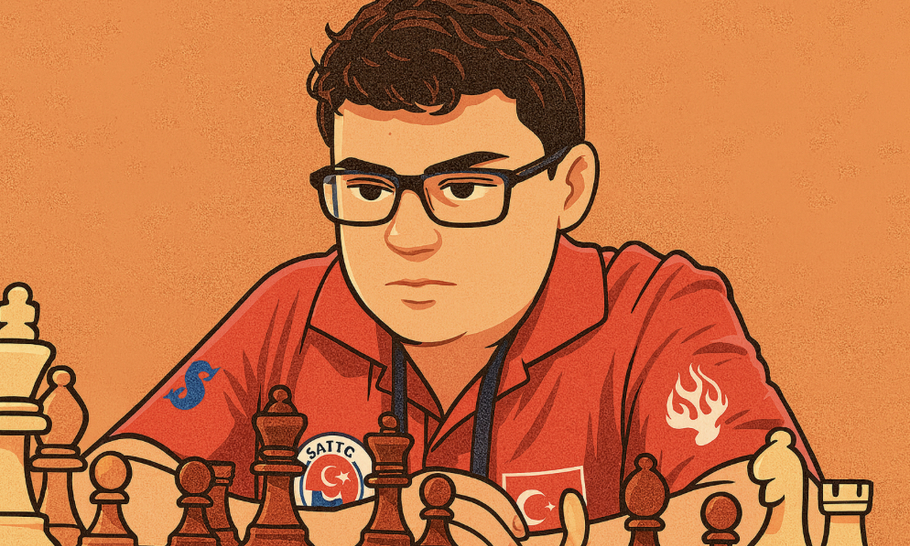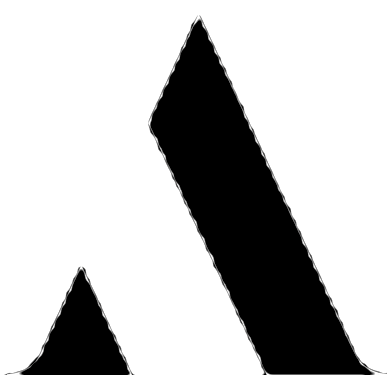Egregious Erdogmus

My favourite line, in the entire sweep of English literature, comes not from the usual suspects—Shakespeare, Dickens, Eliot—but from the bold and now mostly overlooked opening of Tamburlaine the Great: Part Two, where Marlowe’s Turkish Sultan Bajazeth , Yilderim, The Lightning Bolt, thunders out to his numerous followers and captains: “ Egregious viceroys of these Eastern parts.”
It’s a line that once rang out with force. Today, it is quietly erased or politely softened into “most noble”—a substitution that drains it of its bite. Why? Most likely because few remember what egregious originally meant.
The word comes from Latin: grex , meaning flock. To be egregius was to stand apart from the flock—distinct, striking, exceptional. It didn’t always carry the negative weight it does now. It meant, simply, to be unmistakably different. A standout—for better or worse.
That forgotten definition fits Ya giz Kaan E rdogmus better than any superlative you could pin to him.
Born in 2011, Erdogmus ( see my column, Erdogmatism: young Turk in chess , of June 15 ) is a Turkish chess prodigy, whose rise through the ranks of the game has been nothing short of startling. Before his twelfth birthday, he was already the youngest International Master in Turkish history. By thirteen, he had broken into the elite by passing the 2600 rating mark—something no one else had done at that age. In 2025, he is not only the youngest Grandmaster in the world but arguably the most interesting.
He first appeared on the radar in 2022, at the Gligoric Memorial in Serbia, where his performance earned him the International Master title. That same year, he won the ChessKid Youth Speed Chess Championship—a victory that, even in the chaotic and noisy world of online chess, felt precise and deliberate.
By 2023, he was not just competing, but preparing at the highest levels: at FIDE’s training camp in Spain, in major European tournaments, and across age categories that quickly became irrelevant. In Sitges that December, he scored 7.5 out of 10 and finished ninth. For most thirteen-year-olds, that would be a career peak. For Erdogmus , it was simply a checkpoint.
Then came 2024. In April, he became the fourth-youngest Grandmaster in history. A month later, he broke Judit Polgár’s decades-old record as the highest-rated player under 13, climbing to 2569. By October, he had crossed 2600—a feat that set him ahead of legends, statistically speaking, before he had even started shaving.
And he didn’t stop there. In 2025, he tied for second place in the Sigeman tournament alongside Swedish GM Nils Grandelius. Later this summer, he faced veteran Grandmaster Peter Svidler in a 6-game classical and 12-game blitz match. He won the classical section 4–2, including three wins. He lost the blitz—badly—but that’s less important. Blitz is a flash; classical is a portrait. And Erdo gmus paints with depth.
His emergence comes at an odd moment for chess. With “Freestyle Chess” on the rise—an experiment championed even by Magnus Carlsen—there’s a growing push toward unorthodox formats and looser rules. Erd ogmus is the counterbalance: a player rooted in the structure and richness of classical chess, where beauty comes from constraint, not chaos.
There is a kind of rebellion in his style. Not flashy, but defiant. Not rigid, but purposeful. Like Morphy, Alekhine, and Tal, he reminds us that the board still holds secrets. That the game of chess , after all this time, is still not solved.
So yes—egregious is the word. In the older sense. Not scandalous. Not outrageous. Not sensational. Just unmistakably, undeniably set apart.
Had Bajazeth glimpsed the tournament bulletins of our time, he might have recognized something familiar in this Turkish teenager—a spark of the same defiance and command.
Not noble. Not admirable. Not promising.
But egregious
.
And gloriously so.
Yagiz Kaan Erdogmus vs. Peter Svidler
Svidler-Erdogmus match, Marseille, 2025, game 4
1. d4 Nf6 2. c4 g6 3. Nc3 d5 4. Bg5 Ne4 5. cxd5
By the most marginal amount (0.1 of a pawn) the engine prefers either the immediate 5. h4 or, 5. Bh4, which happens to be what I played in a long-ago game. This continued with 5… c5 and concluded after, 6. e3 Nc6 7. cxd5 Nxc3 8. bxc3 Qxd5 9. Nf3 cxd4 10. exd4 Bg7 11. Be2 Qa5 12. O-O Qxc3 13. Rc1 Qb4 14. Rb1 Qd6 15. Bg3 Qd5 16. Rb5 Qxa2 17. d5 Nb8 18. d6 O-O 19. dxe7 Re8 20. Ne5 Bxe5 21. Bxe5 Nc6 22. Ba1 Qe6 23. Qd2 f6 24. Rd5 Qxe7 25. Bc4 Be6 26. Rd7 Qc5 27. Qh6 when Black resigned. (Keene-Eales, Cambridge College match 1971).
5… Nxg5 6. h4 Ne4 7. Nxe4 Qxd5 8. Nc3
8… Qd8
Faced with a virtually unexplored line, the great virtuoso of the Gr unfeld Defence already goes wrong. 8… Qa5 is better and is played more usually.
9. h5 Bg7 10. Nf3 c5 11. d5 e6 12. Qa4+ Bd7 13. Qf4 O-O 14. O-O-O exd5 15. Nxd5 Nc6 16. e3 h6 17. hxg6 fxg6 18. Qg3
The Young Turk has skilfully and seamlessly manoeuvred his queen from one flank to the other, bringing his most powerful piece into the direct propinquity of the enemy king.
18… Bf5?
During the last six or seven moves, Black’s position has adversely escalated from poor to moderately bad; but the text is an error that holes Black below the plimsoll line. Necessary is, 18… Be8 19. Rh4 Bf7 20. Rg4 Rc8 21. Bc4 Kh8 22. Nc3 Qc7 23. Bxf7 Qxg3 24. Rxg3 Rxf7 25. Rxg6 Kh7 26. Rg4, when Black, at least, maintains the status quo.
19. Bc4 Kh8 20. Ng5 Qe8 21. Rxh6+ Bxh6 22. Rh1 Black resigns 1-0
The position is hopeless, with the engine proposing a mate in twelve: 22… Kg7 (22… Rf6 23. Rxh6+ Kg7 24. Rh7+ Kf8 25. Qh2 Bh3 26. Qxh3 Qxe3+ 27. fxe3 Rf1+ 28. Bxf1 a5 29. Ne6+ Kg8 30. Nf6#) 23. Rxh6 Rh8 (23… Kxh6 24. Qh4+ Kg7 25. Qh7#) 24. Rxh8 Qxh8 25. Qc7+ Kh6 26. Nf7+ Kg7/Kh7 (26… Kh5 and mate in two) 27. Nxh8+ Bd7 28. Qxd7+ Kh6 29. Nf7+ Kg7 30. Ng5+ Ne7 31. Qxe7+ Kh6 32. Ne6 g5 33. Qf6+ Kh7 34. Qg7#
A devastating demolition by Erdogmus. Svi dler is a strong Grandmaster, former world title candidate and probably the most expert initiate into the Eleusinian mysteries of defending with the Gr unfeld: a weapon which, in its long history, has claimed such white victims as Alekhine, Euwe and Karpov.
Ray’s 206th book, “ Chess in the Year of the King ”, written in collaboration with Adam Black, and his 207th, “ Napoleon and Goethe: The Touchstone of Genius ” (which discusses their relationship with chess) can be ordered from both Amazon and Blackwells. His 208th, the world record for chess books, written jointly with chess playing artist Barry Martin, Chess through the Looking Glass, is now also available from Amazon.
A Message from TheArticle
We are the only publication that’s committed to covering every angle. We have an important contribution to make, one that’s needed now more than ever, and we need your help to continue publishing throughout these hard economic times. So please, make a donation.





